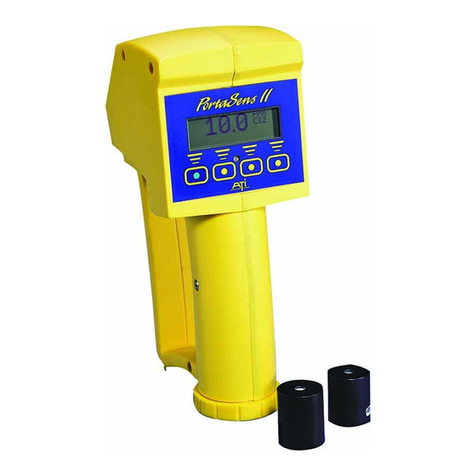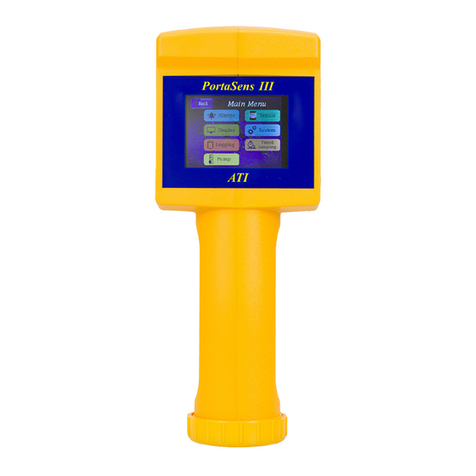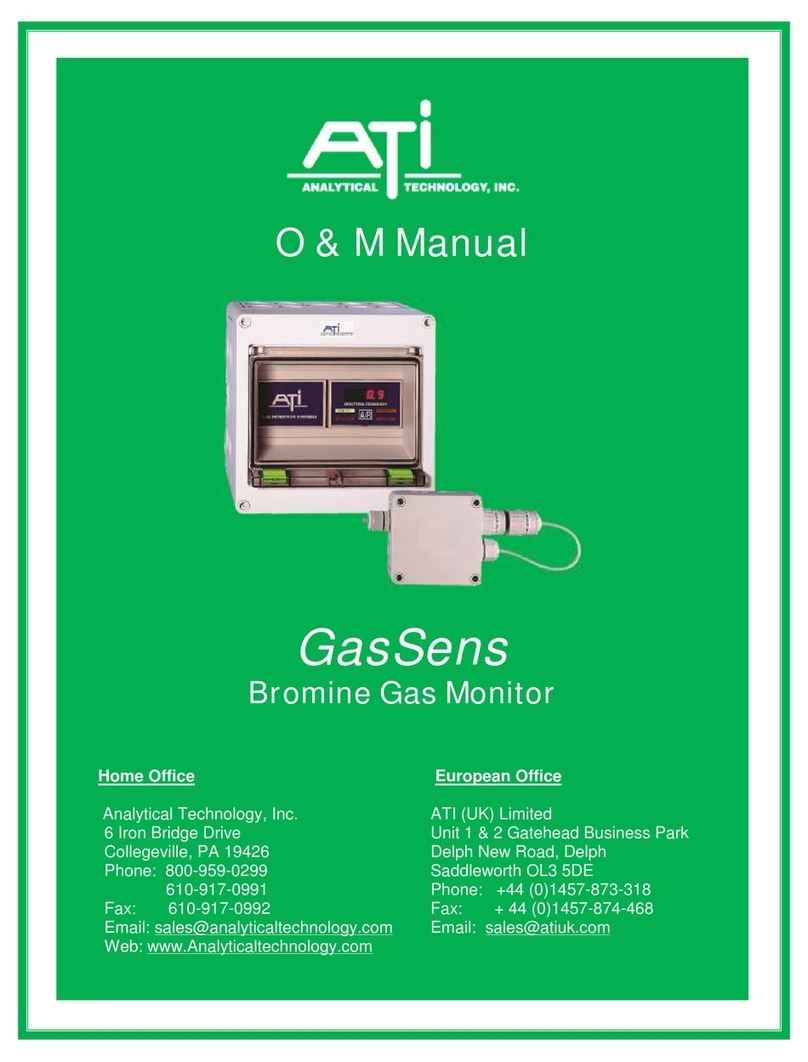
GasSens Gas Detection SystemSection 1-Overview
O& MManual
A14-RK, 8/06 1 -1
TABLEOFCONTENTS
TABLE OF CONTENTS.................................................................................................................................... 1
INTRODUCTION............................................................................................................................................1-3
A11 SENSOR/TRANSMITTER ............................................................................................................................1-4
A14 RECEIVER MODULE..................................................................................................................................1-4
A17 POWER SUPPLY MODULE.........................................................................................................................1-4
NEMA 4X ENCLOSURES .................................................................................................................................1-4
EXPLOSION-PROOF ENCLOSURES.....................................................................................................................1-4
AUDIBLE HORN ...............................................................................................................................................1-5
STROBE LAMP .................................................................................................................................................1-5
A19 BATTERY BACK-UP..................................................................................................................................1-5
MECHANICALINSTALLATION................................................................................................................1-6
ELECTRICALINSTALLATION................................................................................................................1-11
RECEIVERMODULE ...................................................................................................................................2-1
INTRODUCTION................................................................................................................................................2-1
ELECTRICAL CONNECTION...............................................................................................................................2-1
FACTORY CONFIGURATION..............................................................................................................................2-3
CONFIGURATION SWITCHES.............................................................................................................................2-3
SETPOINT SELECTION.......................................................................................................................................2-5
RANGE SELECTION ..........................................................................................................................................2-6
RELAY CONFIGURATION ..................................................................................................................................2-6
EXTERNAL HORN RELAY.................................................................................................................................2-7
DISPLAY INTENSITY.........................................................................................................................................2-7
OPERATION....................................................................................................................................................2-8
STARTUP..........................................................................................................................................................2-8
ALARM ACKNOWLEDGEAND RESET................................................................................................................2-8
TROUBLE ALARM AND RELAY.........................................................................................................................2-9
AUTO-TEST FUNCTION (OPTIONAL).................................................................................................................2-9
LAMPAND HORN TEST..................................................................................................................................2-10
RELAY INHIBIT...............................................................................................................................................2-10
MANUAL AUTO-TEST ....................................................................................................................................2-11
REMOTE RESET..............................................................................................................................................2-11
ANALOG OUTPUT...........................................................................................................................................2-11
AUTO-TEST REMOTE VERIFICATION..............................................................................................................2-12
DEACTIVATINGTHE AUTO-TEST FUNCTION...................................................................................................2-12
TROUBLESHOOTING.................................................................................................................................2-13
RECEIVERMODULE PARTSLIST...........................................................................................................2-14
A17 UNIVERSALPOWERSUPPLY.............................................................................................................3-1
POWERSUPPLYPARTSLIST.....................................................................................................................3-3
OPTIONALEQUIPMENT..............................................................................................................................4-1
INSTALLATION .................................................................................................................................................4-1
OPERATION......................................................................................................................................................4-2
REMOVALFROM SERVICE................................................................................................................................4-2





























